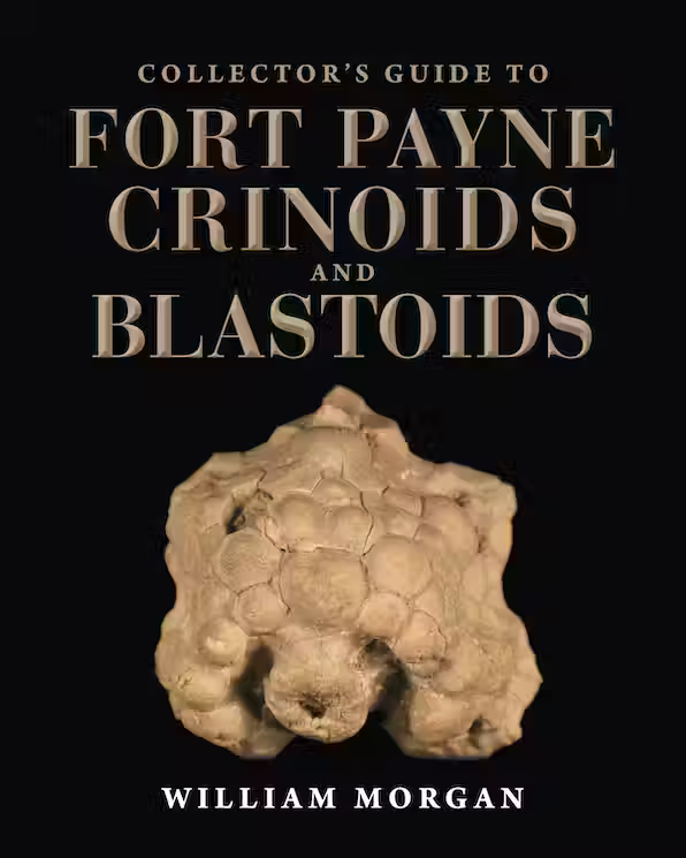Reviewed by Alysha Zazubec (University of Oklahoma)

Morgan, W. 2021. Collectors Guide to Fort Payne Crinoids and Blastoids. (Forward by D.L. Meyer.) Indiana University Press. 182 pp. ($42.00 cloth, $41.99 e-book with 30% PS discount.)
The clear understanding of geology and anatomy presented in this collector's guide goes far beyond that of an amateur paleontologist. This guide to crinoids and blastoids starts with a brilliant overview of the geologic history and morphology of crinoids. The guide expands into a resource for not only the identification of taxa but also discusses the information researchers obtain through facies analysis and geologic formation identification.
A detailed and comprehensive explanation of the anatomy of Paleozoic crinoids is one major success of this volume. Photography is brilliantly coupled with illustrative highlighting of key anatomical features, and the methods used by Morgan to present complex anatomical features are approachable from any experience level. Beyond simply identifying crinoids and blastoids, Morgan also provides details of morphology and paleobiology including postmortem preservation, implications of postmortem disarticulation, ecological tiering, and feeding systems.
Morgan then dives into the identification of Paleozoic crinoids within the Camerata and Pentacrinoidea subclasses. Within these subclasses, lower taxonomic levels are beautifully outlined by well thought-out and compiled identifying characteristics. This section I find particularly helpful and interesting, as morphologies are outlined at each level of the taxonomic hierarchy focusing on taxa found within the Mississippian deposits.
Mississippian formations present within the Fort Payne area are described along with identifying characteristics key to biostratigraphy. Features such as unique taphonomic processes, gradients in density and abundance of crinoids, as well as co-occurring species are outlined in each formation. This outline allows for a clear demarcation between formations for a wide range of experience levels. Cross-sectional illustrations of the formations along with the geologic time assist in orientation within the spatiotemporal context of the Fort Payne Basin.
Over 100 pages of the volume contain high-quality photographs of both crinoids and blastoids from the Fort Payne area, demarcating unique features that make identification straightforward. While Morgan writes in a very accessible way, there is also a glossary of terms included in the final pages of the guide for quick reference.
This guide surpasses its worth as simply a collector's guide for the Fort Payne area and extends its value to aspiring and academic paleontologists alike. Its in-depth exploration of geology, and anatomy, and its comprehensive coverage of crinoids and blastoids make it an invaluable resource for enthusiasts seeking both insights into avocational fossil hunting as well as academic depth in crinoid paleontology.

